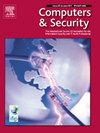Enhancing user identification through batch averaging of independent window subsequences using smartphone and wearable data
IF 4.8
2区 计算机科学
Q1 COMPUTER SCIENCE, INFORMATION SYSTEMS
引用次数: 0
Abstract
Throughout daily life, individuals partake in various activities such as walking, sitting, and drinking, often in a random manner. These physical activities generally exhibit similar patterns across different people, posing a challenge for identifying users using smartphone and wearable data. To tackle this issue, we have developed a new model called Batch Averaging Probabilities (BAP). Our approach involves segmenting input sequences into separate windows, independently classifying each segment, and then averaging the probabilistic predictions to make the final decision. The BAP method introduces the concept of primary patterns, which are the smallest meaningful sequences. It effectively deals with the random order of primary patterns within mixed patterns. Our work includes theoretical evidence supporting the BAP method, showcasing its ability to minimize prediction variance and enhance model accuracy. Additionally, the model’s training algorithm employs a unique approach. Model selection and regularization are based on the averaged loss of segments, reducing overfitting and improving performance without the complexity associated with using an ensemble of neural network models. We evaluated the effectiveness of our proposed method using accelerometer and gyroscope data from diverse user activity datasets including UIFW, WISM, HOP, CLD, RSSI, DI, DB2 and HAR, demonstrating significant performance improvements over state-of-the-art models. Specifically, our approach outperforms DB2 by 1.08%, HAR by 7.67%, and DI by 14.76% in terms of accuracy.

求助全文
约1分钟内获得全文
求助全文
来源期刊

Computers & Security
工程技术-计算机:信息系统
CiteScore
12.40
自引率
7.10%
发文量
365
审稿时长
10.7 months
期刊介绍:
Computers & Security is the most respected technical journal in the IT security field. With its high-profile editorial board and informative regular features and columns, the journal is essential reading for IT security professionals around the world.
Computers & Security provides you with a unique blend of leading edge research and sound practical management advice. It is aimed at the professional involved with computer security, audit, control and data integrity in all sectors - industry, commerce and academia. Recognized worldwide as THE primary source of reference for applied research and technical expertise it is your first step to fully secure systems.
 求助内容:
求助内容: 应助结果提醒方式:
应助结果提醒方式:


